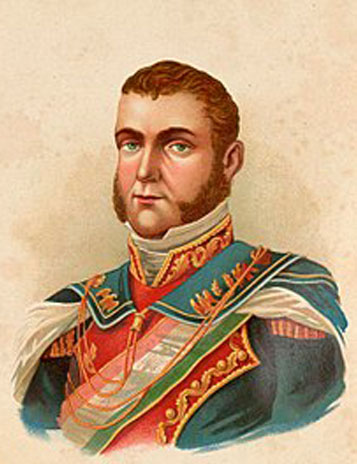In 1821 Mexico was born to an independent life with immense expectations based on its legendary wealth. It seemed as if the prophecy of the famous German traveler, Alexander von Humboldt, was about to come true: “The vast kingdom of New Spain, well cultivated, could by itself produce everything that commerce goes searching after throughout the rest of the world.”
It was a golden year in the history of the nation. In September the country saw the final chapter of an independence movement that was rapid, bloodless, orderly, and above all successful – totally different from Hidalgo’s attempt of eleven years before. The unbelievable had happened, in just seven months. Through the bold initiative of the royalist leader Agustin de Iturbide, the country’s creole classes – priests, soldiers, businessmen, and professionals – reached out to large sections of the rural and urban populace under the mantle of an agreement reached in the small southern town of Iguala.
The pact was due to the efforts of two men who had been stubborn enemies since the days of Morelos: Vicente Guerrero, a mestizo, the last leader of the Insurgents, and Iturbide himself, a creole, who had opposed Hidalgo and defeated Morelos.
– pg. 119, MEXICO: Biography of Power – A History of Modern Mexico, 1810-1996, by Enrique Krauze, HarperCollins
On September 27, 1821, Iturbide’s thirty-eighth birthday, the ten thousand men of the “Trigarantine Army,” royalists and Insurgents united, entered Mexico City. It was the first time that the independence movement had shown its face in the City of Palaces – its first and definitive appearance. The army’s tricolored flag symbolizing the gist of the Program of Iguala was so popular that it would come to be adopted, with minor alterations, as the national flag. Against a white background, representing the purity of the Catholic religion, flanked by a green that referred to independence and a deep red that conveyed the memory of Spain, the flag bore the emblem of the mythical foundation of Mexico-Tenochtitlan by the Aztecs: an eagle perched on a nopal cactus and devouring a serpent.
“That September twenty-seventh,” wrote Lucas Alaman, “was … the only day of pure enthusiasm and pleasure, without any admixture of sad memories or foreshadowing of new misfortunes, the Mexicans have ever enjoyed.” Mexico was born of multiple reconciliations, of an embrace between royalists and Insurgents, between gapuchines, creoles, Indians, African-Mexicans, mestizos, and Castes, between the pre-Hispanic past and the three centuries of colonialism, between the branch and the trunk.
At that moment of expansion and optimism, merely to contemplate the map of imperial Mexico must have been astonishing. The country ran from the Arkansas River and California in the north to Central America in the south, from the long coast of the Pacific to the Gulf of Mexico. It included almost all of the southern part of North America and most of Central America. Iturbide could contemplate the future “intimate union” of the new empire with the island of Cuba and regard the United States with a mixture of admiration and apprehension. The situation in Texas particularly concerned him “because of the former government’s neglect of this very interesting part of the Empire.”
– pgs. 124, 125, ibid.

